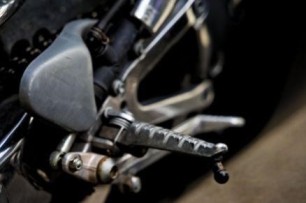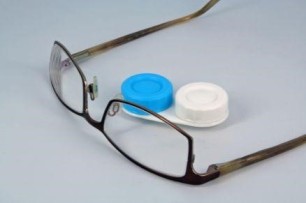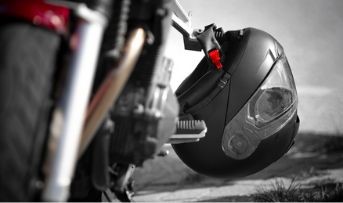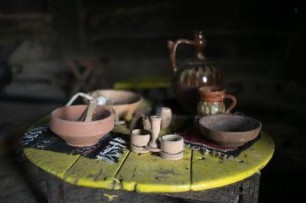General Insurance Blogs, Articles & Updates by - Magma HDI
Have us call you
- RENEW YOUR POLICY
- BUY NEW POLICY

What are dry-type and wet-type clutches used in motorcycles
A clutch is one of the most integral parts of your bike, and without a properly functioning clutch, your bike won’t be operational. This mechanical device is used to engage and disengage power from the engine to transmission for the change of gears. It facilitates energy flow to the rear wheels to change the gears.
Changing the gear without engaging the clutch while the vehicle is static can be dangerous and cause friction. Over time this can affect the gearbox and even break it under stress.
When talking about clutches, there are two kinds: the wet type and the dry type. This article will look at both of them and how they work.
What are dry-type clutches?
The main difference between wet and dry type clutches is the build and the lubrication. Dry-type clutches are not covered in oil. Without lubrication, dry-type clutches fail to stay cool and cause the dry clutches to be louder. Dry-type clutches also undergo wear and tear rather quickly compared to wet-type clutches. They are not easily found on regular bikes for the reasons mentioned above. However, racing bikes tend to use these clutches as fewer drag results in enhanced speeds.
Why did bike manufacturers start using the dry clutch? Since the clutch is connected to the gearbox, it was meant to be located inside the engine. But this would hinder the lubricants in the machine, which the manufacturers didn’t want. Hence, they put the clutch outside, making the entire assembly smooth and lightweight.
Dry clutches are easy to operate and can be repaired quickly. Since it is placed outside the engine, it does not degrade the engine oil and aids in the longevity of the oil. It also gives higher power to the rear wheel for high-performance bikes.
However, because of lack of lubrication, dry clutches heat up quickly and can be susceptible to cracks and other wear and tear. Dry clutches have less life than wet clutches and require frequent cleaning.
What are wet-type clutches?
Wet clutches have been the more popular choice when it comes to clutches in recent years. Since the wet clutches are placed inside the engine, it is covered in engine oil, thus allowing it to cool down quickly.
With a higher degree of lubrication, these clutches can endure mishandling and perform better. As it is located within the engine, so any noise inside the engine translates to nothing outside the main body. If your bike runs on wet-type clutches, you can rest assured that your bike will experience a smooth ride and long life.
Wet-type clutches typically face fewer maintenance issues since it is well lubricated. But if the need is, service is challenging and time-consuming as the engine, and the casing needs to be dismantled to reach the clutch.
This article gives you a good idea about the advantages and disadvantages of different clutch types. Remember that no matter the kind of clutch, it is essential for your bike to undergo regular maintenance and services. Proper operational habits and servicing are vital to extending your bike’s life. Do not forget to look for bike insurance online to protect it in case of accidents, repairs, or general maintenance.
Click HERE to buy bike insurance online.
Disclaimer: The information provided above is for illustrative purposes only. To get more details, please refer to policy wordings and prospectus before purchasing a policy.

Using lenses and spectacles and determining which is the right choice for you
Your eyes provide the vision to see the world in its truest form and help you interpret and control every tiny movement in your body, whether it is a reflex or voluntary action. But in this era of fast-paced technological development, spending long hours with gadgets can significantly affect your eyesight.
Staying on the screens also comes with disadvantages; the major one is eyesight issues. This phenomenon can be easily seen in the younger generation. There are mainly two ways you can protect your eyes or rectify your vision problems- spectacles and contact lenses.
Are you someone who’s looking for some more information about the difference between using lenses and spectacles? This blog discusses the differences to help you make an informed decision. So, let’s get started.
How does using contact lenses or glasses help you?
They help with multiple vision problems like hypermetropia (farsightedness), myopia
(nearsightedness), distorted vision issues or astigmatism, age-related vision disorders
(presbyopia), and protection against blue rays emitted from screens, and much more.
Now let’s discuss the differences between using lenses and spectacles:
1. Time duration:
Wearing contact lenses for extended periods without removing and cleaning them can put your eyes at a high risk of infections. But if you clean them regularly, contact lenses can be used for comparatively longer durations and help you see clearly without discomfort.
On the other hand, glasses stay on your nose but tend to cause less discomfort and difficulties while you put them on. They are easier to clean and maintain. Glasses run a very low risk of infections.
2. Customisation:
The lenses can be customised according to your priorities and needs, for example, protection against the sun and UV rays. Some lenses also provide UV ray protection, but they cannot be considered as a replacement for using sunglasses built for the said purposes.
3. Safety:
Glasses can help you in avoiding severe eye injuries. They act as a barrier between external objects and your eye, thus preventing any substances or particles from impairing your vision. Lenses are put in place inside the eye, so protection against injuries and vision loss is at a lower grade when compared to glasses.
4. Risks during activities:
If you have to wear glasses constantly, it can be difficult for you in heavy activities such as workouts. You might end up breaking your glasses or experience significant discomfort as the glasses would run the risk of falling or slipping on your nose. Using lenses in such cases is a lot more convenient and low maintenance. The sweat would cause uneasiness in the case of glasses compared to the ease and comfort that the lenses provide.
Apart from the factors discussed above, other deciding factors between lenses and spectacles could be the price, replacement, availability, prescriptions by your doctors, peripheral vision, etc. You need to check all these points before arriving at a final decision.
While we spoke about taking care of your eyes against various issues and injuries, let’s not forget to consider your and your loved ones’ overall health. Due to some unprecedented circumstances, things can worsen the situation. In such cases, health insurance provides significant relief from all the financial stress of the moment. You can explore all the insurance options offered by online health insurance companies and choose the one which caters to your needs in the best ways.
Click HERE to learn more about purchasing insurance from online health insurance companies.
Disclaimer: The information provided above is for illustrative purposes only. To get more details, please refer to policy wordings and prospectus before purchasing a policy.

Before riding a borrowed bike, run these quick checks
Two-wheelers are extremely convenient modes of conveyance. Being easy to control and manoeuvre makes them a popular choice, resulting in the continued exponential growth of the Indian two-wheeler market.
While it is known that bikes are relatively unsafe compared to cars, an experienced rider doesn't face safety issues when following general driving rules. The additional cover provided by bike insurance enhances the safety quotient for riders and protects them from contingent financial losses resulting from accidents.
However, if you choose to borrow a bike, it becomes essential to run some quick checks to assess its condition before taking it for a ride. Whether you borrow it from a friend or rent one from a bike rental, here is a list of basic checks before riding a borrowed bike.
1. Inspect the tyres:
A bike's tyres are essential components that can cause or prevent an accident. Before you turn on the ignition system, ensure that the tyres are in good shape. Borrowed bikes have the possibility of having worn-out tyres, which you need to inspect thoroughly before you ride them. This is to ensure that no issues arise while you're on the road that may leave you stranded.
While a quick look can help identify any significant problems, such as deep treads or punctures, it is ideal to use your hand or kick the tyres to check the air pressure. The tyres' ideal PSI is listed on the body of the bike in case you need to fill up air in the tyres.
2. Don’t miss out on the brakes:
Well-functioning brakes are just as important as tyres to ensure the rider's safety. Depending on the type of two-wheeler, you may not have a foot brake to test. In the case of bikes, engage the foot brake and gauge the force required to engage the brake. Also, check the brake levers near the handlebars to test how much pressure is needed to apply the brakes. Even if you skip some of the other steps on this checklist, this is a non-negotiable inspection.
3. Did you check the side mirrors:
Every rider adjusts their side mirrors as per their convenience. While they may not seem important, they are essential for ensuring complete visibility of the rear traffic to make appropriate judgements on the road. If you have trouble setting them right, use this trick- adjust the mirrors such that the inward corners of the mirrors show your shoulder line on each side respectively. This way, you can have an optimal view of the vehicles behind your bike.
4. Indicators:
Poor indication habits while switching lanes and taking turns are leading causes of accidental grazing of vehicles, which sometimes escalate into massive accidents. This can be avoided by simply locating and checking the functioning of the turn signal controls, also called indicators and testing them before riding the borrowed bike.
5. Gear shifts:
What makes bikes difficult compared to scooters is the need to shift gears. If you have borrowed a manual transmission bike, check its gear shift mechanism to efficiently and effectively switch between gears while riding.
6. Valid driver's licence:
For bike insurance to cover any unfortunate accident while you ride a borrowed vehicle, you must hold a valid driver's licence and not drive under the influence of any substance.
*pro-tip
It is legally required to purchase bike insurance for every bike before it hits the road. While the policy can be purchased by either the owner or the short-term user, having valid bike insurance proof is essential. Check if the owner has already purchased a policy. If not, buy one for the short term in case of a rental to avoid legal troubles.
While your friend may have lent you a bike in good faith, it is necessary to check these aspects to ensure your safety. Additionally, inspect the bike's throttle, clutch, display, and the validity of bike insurance to avoid any mishaps and getting involved in unnecessary trouble due to poor maintenance of the borrowed bike.
Click HERE to buy a robust bike insurance.
Disclaimer: The information provided above is for illustrative purposes only. To get more details, please refer to policy wordings and prospectus before purchasing a policy.

Traditional vs. modern kitchen equipment: which is better for your health
A kitchen is called the heart of a home for a reason. It is nothing less than a laboratory for enthusiastic food lovers. These kitchen stars love to experiment with new recipes, but they hunt for clues when it comes to kitchen remodelling.
The battle between traditional and modern kitchen equipment has been a close one. Modern technology has given us reliable, highly accurate equipment with timers that help save time. So, they are our first choice while buying utensils.
However, studies have shown that various metals used in modern kitchen utensils are detrimental to health. For example, stainless steel cookware has nickel and chromium leaching from it to cause long-term harm to an individual's health.
The revival of the traditional vs. modern kitchen equipment debate has started from the new wave of awareness about the carcinogenic properties of these everyday utensils. It has shifted the paradigm in favour of traditional equipment.
This blog strives to give you an insight into why traditional kitchen equipment is the healthier choice between the two.
1. Brass utensils:
While modern living has made us turn to the more convenient steel and glass, utensils made of old-school metals have been noted to contain many benefits. Experts have found that food stored in brass utensils preserves about 93% of nutrients.
Brass is still used abundantly in small towns and villages across the country. According to Ayurveda, it increases haemoglobin count, improves skin conditions, and pacifies pitta (aggression). Additionally, water stored in brass vessels increases strength and immunity.
2. Copper utensils:
The modern Teflon and non-stick cookware are easy to use and look great, but they may lead to health issues. The chemical that comes from the non-stick cookware is highly detrimental to your skin and may also cause liver tumours, breast cancer, infertility, and kidney disorders.
Copper is a great alternative. Research has now proved that food cooked in copper vessels is rich in collagens that offer various health advantages. Water stored in copper overnight gives the maximum benefits of this metal. It detoxifies the body, helps increase haemoglobin secretion, and helps the peristaltic movement of the gut.
3. Silverware:
Silver is an unconventional choice for cutlery these days when everyone has turned to ceramic. According to Ayurvedic science, silver is good for people with dizziness and excessive thirst. It calms down inflammation and helps people with low sperm count.
Continuing the teachings of Ayurveda, if you're a pitta type, you have a higher chance of having red, sensitive skin and are quick to anger. Using silverware will reduce your irritation and calm reactive skin.
4. Clay utensils:
These utensils help in maintaining healthy nutrients while cooking. Although it takes double the time to cook in clay pots and generally doesn't look as sophisticated as modern kitchen utensils, they preserve complete nutrition in food. An Ayurvedic study proved that eating in clay utensils relieves pain in those with rheumatoid arthritis.
Modern kitchen equipment gives a level of comfort and sophistication to our homes. The traditional utensils have a charm of their own. They may look old-fashioned compared to the modern but overshadow their health benefits. You cannot compromise with quality when it comes to health.
It's always good to keep your health as the topmost priority. It is rightly quoted that "health is the greatest wealth". If health is compromised, then it can drain your wealth. Don't fall victim to unexpected health expenses. Choose the best health insurance policy for family to remain stress-free.
Click HERE to know more about health insurance policy for family.
Disclaimer: The information provided above is for illustrative purposes only. To get more details, please refer to policy wordings and prospectus before purchasing a policy.


